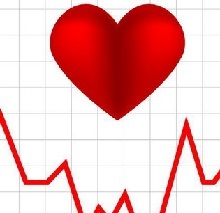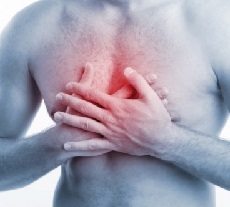 Tachycardia is called a rapid heartbeat, which has any origin. It takes place if the heart rate becomes higher than 100 beats per minute.
Tachycardia is called a rapid heartbeat, which has any origin. It takes place if the heart rate becomes higher than 100 beats per minute.
In this case, the rhythm can remain correct, that is, the duration of the intervals between cardiac contractions is constant. The condition, in which the attack of tachycardia begins unexpectedly and just as suddenly ends, is called paroxysmal tachycardia.
It should be noted that there is no clear boundary between the absence of tachycardia and its presence. For example, the American Association of Cardiologists diagnoses tachycardia after exceeding the heart rate at 100 beats / min. Thus, it can be considered that a heartbeat within 90-100 beats is a borderline condition, which gives grounds for assuming a high risk of heart problems in the future.
Mechanism of development of tachycardia
The work of the heart is regulated by the nerve plexus located in the right atrium, which is called the sinus node. It sets the rhythm and frequency of contractions due to the generation of a nerve impulse that, through a conducting system, spreads to the muscles (myocardium) of the heart and causes them to contract.
An increase in the number of pulses in the sinus node or other parts of the conducting system, respectively, causes an increase in the frequency of cardiac contractions - tachycardia.
Causes
Why there is a tachycardia of the heart, what is it, and how to treat it? It should be understood that tachycardia is a symptom, not a disease. Its causes lie in a number of other diseases, among which:
- disorders of the autonomic nervous system;
- congenital anomalies of the heart, for example, extra chords in it;
- endocrine disorders (hyperthyroidism);
- hemodynamic disorders;
- various arrhythmias, etc.
Tachycardia can manifest itself as a normal reaction to emotional and great physical exertion, at elevated temperature, due to drinking alcohol intake, from smoking.
Tachycardia is divided into 2 forms: physiological and pathological. The first can appear in a healthy person with normal heart function as a reaction to external factors, the second occurs when there are certain diseases.
Pathological tachycardia is harmful to the body:
- At first, in this case, a dangerous attack of tachycardia, which is an intensive work of the heart: ventricles do not have time to be filled with blood, which leads to a lowering of blood pressure and an outflow of blood from the organs.
- Secondly, increased heart rate leads to poor blood supply. The heart requires more oxygen, as it works more, and the deterioration of the blood supply leads to the risk of developing coronary artery disease and, as a result, "earning" a heart attack.
Pathological tachycardia is classified according to certain characteristics (localization and causes) and can be presented in the following form:
- Paroxysmal, which has a different origin, therefore, forms are distinguished in it: supraventricular or supraventricular, which is of two kinds (atrial and atrioventricular) and ventricular or ventricular.
- Sinusivewith an increase in heart rate above a certain index in comparison with the age norm (for adults -> 90 beats per minute), at which the impulse comes from the sinus node, which is the driver of the rhythm.
Symptoms of tachycardia
When tachycardia develops, the main symptoms are frequent palpitations, a feeling of weakness, a feeling of dizziness, a feeling of lack of air, a feeling of impending loss of consciousness.
In the absence of heart lesions, symptoms of sinus tachycardia are not expressed and may not be subjectively felt for a long time. A slight increase in the heart rate to 100 beats / minute is usually found by accident when measuring blood pressure.
The initial symptoms usually do not pay attention and resort to medical care when attacks have a frequency of 130-150 beats / min, which is almost twice the normal heartbeat.
Diagnostics
Before determining how to treat a tachycardia, it is worth to go through the examination and determine the causes of its occurrence.
Common tests for diagnosis are:
- Electrophysiological study. The method is aimed at studying the electrical properties of the myocardium, revealing the mechanism, determining the localization of foci of tachyarrhythmia.
- Electrocardiogram (ECG)Is a method of recording electrical impulses of the heart. Thanks to the ECG, the doctor determines the frequency and rhythm of the heart rate, and also identifies the changes that are characteristic of various heart diseases. ECG allows you to clarify the diagnosis of sinus (supraventricular), or ventricular tachycardia. If necessary, you will be offered a veloergometry - recording the work of the heart during exercise (work on the stationary bike).
- Assessment of the sensitivity of the baroreflex(study of autonomic regulation).
- Magnetic resonance imaging(study of the centers of fibrous and adipose tissue in the heart).
- Radiographic examination of the heart(with the use of contrast).
- A general blood test allows you to clarify the number of red blood cells, hemoglobin and other blood cells, which allows you to detect diseases such as anemia, leukemia, etc.
Taking into account the results of all tests, and taking into account the existing symptoms of tachycardia, appropriate treatment is prescribed.
Complications
In addition to conduction disorders, heart rhythm, tachycardia can give such complications as:
- cardiac asthma,
- thromboembolism of cerebral vessels,
- arrhythmic shock,
- pulmonary edema,
- pulmonary embolism,
- acute circulatory insufficiency of the brain.
Ventricular tachycardia in combination with acute myocardial infarction can cause death.
Treatment of tachycardia
In the case of tachycardia, treatment depends on the causes of development and its specific type. In some situations, no treatment is required - just calm down, relax, change your lifestyle, etc. The main directions of treatment of tachycardia is the prevention of her attacks in the future, minimizing the complications caused and bringing the heart rate to a normal state.
If we talk about the medical method of eliminating the rapid heartbeat, then this is mainly sedative drugs. In the first 10-15 minutes, if at rest the heart rhythm is not restored, then you can take such drugs as volokardin, corvalol, tincture of valerian. Also, the glycine tablet will help to lower the pulse, which must be put under the tongue.
In addition to sedative drugs, antiarrhythmics can also be used. This is a fairly extensive group of drugs with different mechanisms of action on the body. Prescribes such medications only by the attending physician on the basis of all the data on the state of your health. Antiarrhythmic medications are, for example, flecainide, adenosine, propranolol, verapamil and other medications.
In some cases, when medication is not effective, doctors also resort to surgery. For example, with serious hormonal disorders, when there is a need to remove a part of the gland producing an excess of hormones. Also, the operation is indicated for gross heart defects and other heart diseases, when the only way out of the situation is surgery.
Forecast
Sinus tachycardia in patients with heart disease is most often a manifestation of heart failure or left ventricular dysfunction. In these cases, the prognosis can be quite serious, since the sinus tachycardia is a reflection of the reaction cardiovascular system to reduce the ejection fraction and the disturbance of intracardiac hemodynamics.
In the case of physiological sinus tachycardia, even with pronounced subjective manifestations, the prognosis is satisfactory.
Prevention
Prevention of sinus tachycardia means early diagnosis and timely therapy of pathology, as well as elimination of non-cardiac factors in the development of arrhythmias. Avoid the serious consequences of tachycardia with consistent adherence to the recommendations for a healthy lifestyle.

How to choose probiotics for the intestine: a list of drugs.

Effective and inexpensive cough syrups for children and adults.

Modern non-steroidal anti-inflammatory drugs.

Review of tablets from the increased pressure of the new generation.
 Antiviral drugs are inexpensive and effective.
Antiviral drugs are inexpensive and effective.



